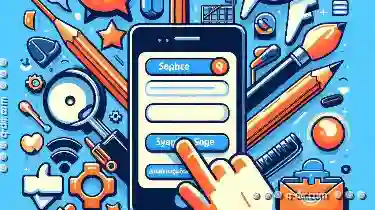The way information is presented through icons can significantly impact how users perceive and engage with applications. In this blog post, we will delve ...
1. Understanding Icon View Simplicity
2. Conclusion: Crafting an Ideal Icon View for User Engagement
1.) Understanding Icon View Simplicity
Icon view simplicity in UI/UX design is about creating visual representations that are straightforward and easy to understand without extensive explanations. The goal is to allow users to quickly grasp the purpose of each icon simply by looking at its graphical representation. This approach reduces cognitive load, enhances usability, and ultimately improves user satisfaction.
1. Minimalistic Design
- A minimalist design philosophy in iconography means using only essential elements without clutter or unnecessary details. Each icon should convey a clear message with a single visual element.
- Example: The "home" icon might be represented by a simple house shape, while the "email" icon could be an envelope.
2. Consistent Categorization
- Consistent categorization of icons across different sections or pages helps users build mental models and anticipate functionality based on their previous experiences.
- For instance, using the same style and color coding for "social media" icons in various parts of an app can significantly reduce confusion.
3. Clear Labeling
- Even with minimalism, it’s crucial to provide clear labeling that appears alongside or below the icon to confirm its function. This is particularly useful for users who might not immediately recognize the icon's meaning.
- Labels should be concise and contextually relevant.
4. Responsive Adjustment
- The size of icons can change dynamically based on the screen resolution or device type, ensuring that they are always appropriately scaled and readable.
- On smaller screens like smartphones, icons might appear larger with more detailed representations to enhance usability.
5. Use of Color and Contrast
- Bright colors and high contrast between icons and background help ensure visibility even in busy layouts or when multiple icons are present on a screen.
- However, overuse of color can be distracting; therefore, it’s important to balance aesthetics with usability.
6. Feedback Through Interaction
- When users interact with an icon (e.g., tapping on a button), the interaction should provide visual feedback that indicates success or failure in a clear and understandable manner.
- This might include color changes, animations, or sound cues depending on the platform guidelines.
7. Accessibility Features
- Icons designed for simplicity are also crucial for accessibility. They should be perceivable by all users, including those with visual impairments, through appropriate use of contrast and clear labeling.
- Tools like screen readers can interpret icons along with labels to provide context to visually impaired users.
8. Testing and Iteration
- Similar to other design aspects, icon views need regular testing and iteration based on user feedback. Metrics such as click rates, bounce rates, and direct user comments can guide decisions about improving the clarity of icons.
2.) Conclusion: Crafting an Ideal Icon View for User Engagement
Implementing a minimalist approach in your app’s icon view not only enhances aesthetics but also significantly improves usability. By focusing on simplicity, you empower users to navigate through complex features effortlessly, thus fostering deeper engagement and satisfaction with the application. As always, keep learning and adapting based on user behavior and technological advancements to refine your interface design further.
The Autor: / 0 2025-03-23
Read also!
Page-

The Unwritten Rules of Effective Address Bar Use
Navigating the digital landscape can often feel like navigating a maze, and one crucial tool that helps us stay oriented is the humble address bar. ...read more

The Case for a Completely Redesigned File Explorer
From personal users to professionals, the way we interact with files and folders has evolved significantly over time. While many existing File ...read more

Tab's Obsolescence: When Did We Stop Questioning its Value?
Among the many tools that have simplified this process are tabs - those small but mighty elements on user interfaces that help us switch between ...read more